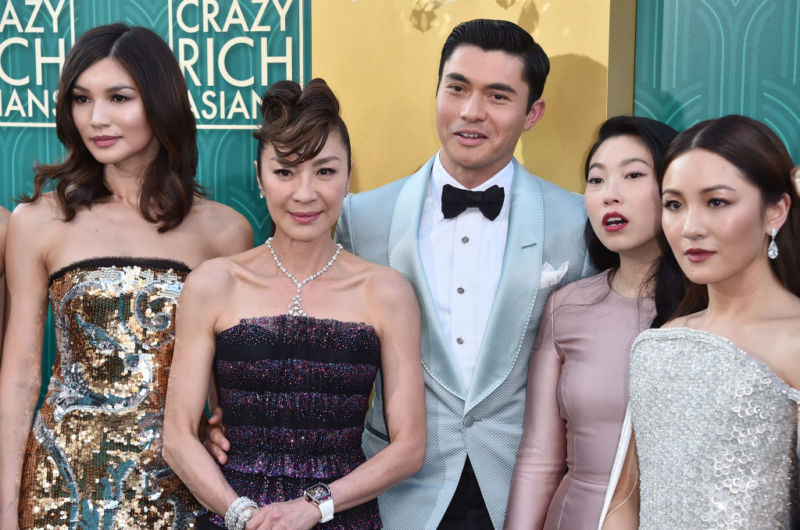Titi Mary Tran/Nguoi-Viet English
If you grew up in Asia and watched a lot of movies that have Asian stars, it isn’t a big deal to see “Crazy Rich Asians” on the big screen.
But it is a big deal if you were born and raised in the United States, England, Australia or any other English-speaking country.
Why, you ask?
For starters, this is the first time in 25 years that a major Hollywood studio has released a movie in which the majority of the cast is Asian. The last time that happened? The “Joy Luck Club” in 1993.
In reality, many Asian-American families struggle in their day-to-day living, but seeing images of Asian cultures with enormous wealth and rich lifestyles in the movies elicits new feelings.
At a minimum, Asian-American voices and stories are shining in countries that traditionally see Asian-Americans — especially women — as outsiders or marginalized groups.

“Crazy Rich Asians” is a romantic comedy that was released in the United States by Warner Bros. on Aug. 15. The movie depicts a New York University economics professor — Rachel Chu, played by Constance Wu of “Fresh off the Boat” — who accepts an invitation from her boyfriend, NYU history professor Nick Young (Henry Golding), to travel to Singapore for a wedding.
Nick is an only son who stands to inherits one of Asia’s largest fortunes and is one of Singapore’s most eligible bachelors. Rachel has no idea how rich Nick’s family is until Nick tells her and after he arranges a first-class flight to Singapore. Rachel then has to contend with jealous socialites and Nick’s family, especially his disapproving mother.
I was skeptical at first because I wasn’t sure if the movie would live up to the hype. But after watching the film thrice — once with Asian-American journalists, once with a crowd of senior citizens and another on a late Tuesday night sreening with mostly teenagers in the audience– and witnessing the cheering of all three groups, it’s no surprise why “Crazy Rich Asians” is having a successful run for multi-generational audiences.
Laughter, tears, sadness, surprise and love are part of the movie, which has all the elements needed to make it a hit this summer. But the film didn’t satisfy my hunger for Asian-American representation on the big screen.
I want to see the culture’s nuances, especially those that can’t be mistaken. The fact that characters in the film are comfortable switching among English, Mandarin and Cantonese — something most bilingual or multilingual Asian-Americans do every day — made my thirst for these dynamics even more “crazy.”
One scene that fit the bill was the mahjong game between Rachel and Eleanor Sung-Young, played by Michelle Yeoh. They used the game to talk about the future of their beloved man.
How classic.

For me, the movie’s stars aren’t the ones who stole the spotlight. Peik Lin Goh (Awkwafina) and Astrid Leong-Teo (Gemma Chan) were perfect in their supporting roles.
Playing a cool, real and straight-forward college friend to Rachel, Peik gives moviegoers hearty laughter that makes them fall in love with her instantly.
Then there is Astrid, a character most high-achieving Asian-American women can identify with. Her grace and down-to-earth attitude linger even after the movie is over. Astrid is hard-working, smart and strong, yet subtle and enduring. And her British accent enhances her sexiness.
In a story published in The Washington Post about her character in “Crazy Rich Asians,” Chan said: “A lot happens for her (Astrid) – people think she has this perfect existence, with a perfect wardrobe and a perfect marriage, but she’s really struggling to hold it all together, which I think a lot of women can identify with.”
In summary, you should see “Crazy Rich Asians” to be in harmony with stories about English-speaking Asian-Americans on the big screen. Big box-office numbers could lead to many other Asian-American movies; in its first eight days of release, the movie brought in an estimated $48 million, according to Forbes magazine.
A sequel to “Crazy Rich Asians” already is in development.
The movie has enough to transform a film event into a cinema movement. Most importantly, it has the ability to spark its audience to experience a newer and more exciting world.

